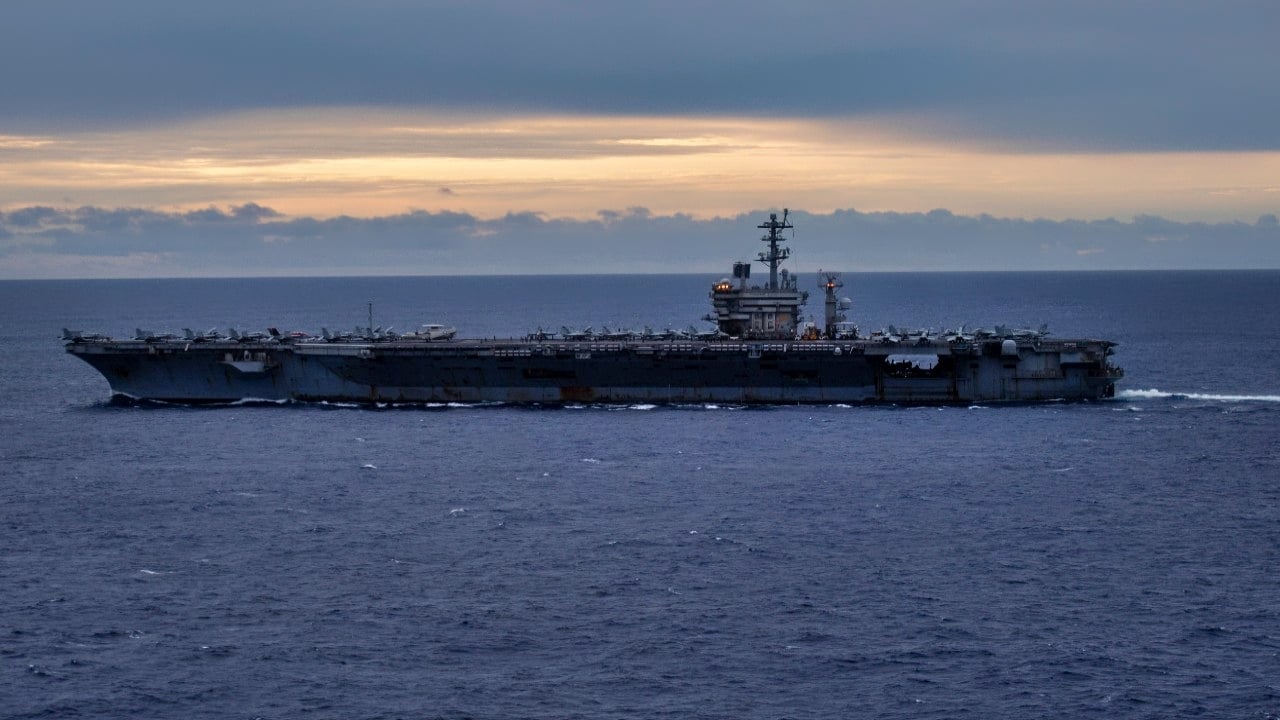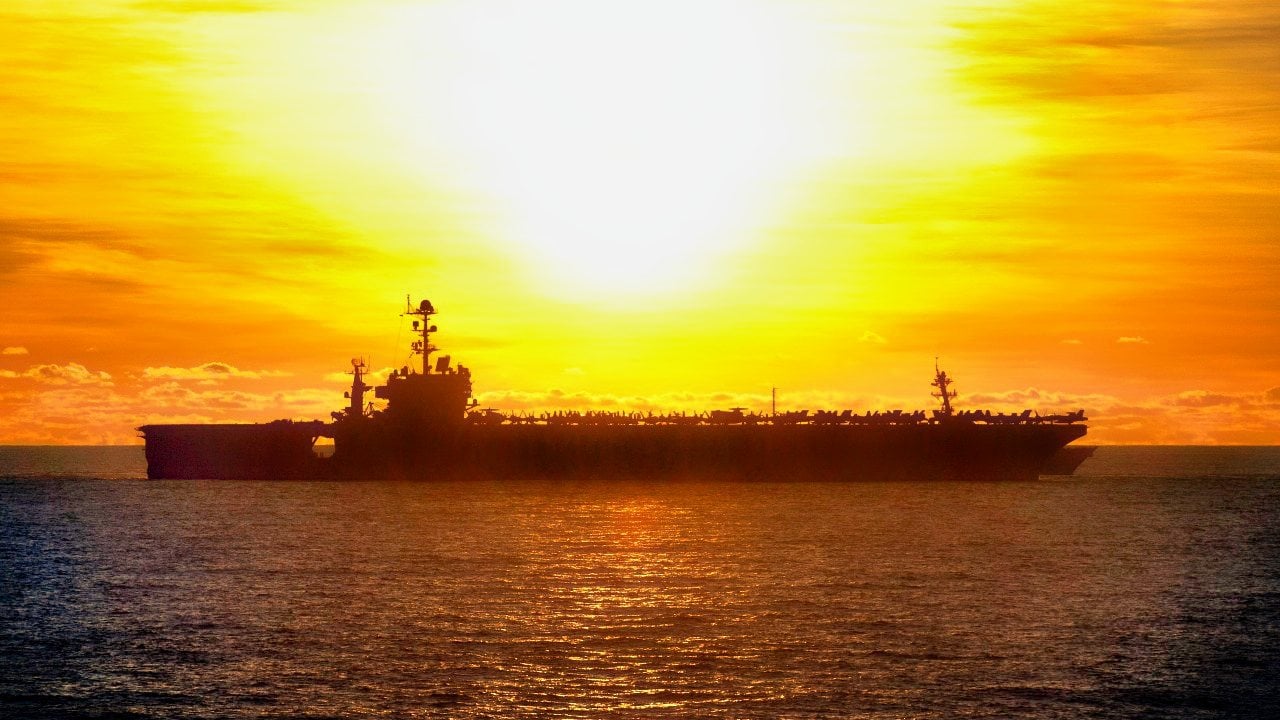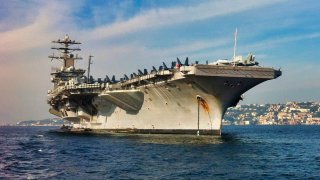USS Nimitz: The Aircraft Carrier That Made the U.S. Navy a Superpower
The USS Nimitz (CVN-68), the lead ship of the Nimitz-class nuclear-powered aircraft carriers, symbolizes a pivotal era in U.S. Navy history. Commissioned in 1975, it introduced groundbreaking technologies like nuclear propulsion, vastly extending its range and operational endurance.
What You Need to Know: The USS Nimitz (CVN-68), the lead ship of the Nimitz-class nuclear-powered aircraft carriers, symbolizes a pivotal era in U.S. Navy history. Commissioned in 1975, it introduced groundbreaking technologies like nuclear propulsion, vastly extending its range and operational endurance.

-Throughout its service, the Nimitz played critical roles in major conflicts, including Operation Desert Storm and the Global War on Terror. As the Navy transitions to the newer Gerald R. Ford-class carriers, the USS Nimitz is set to be decommissioned in 2026.
-Its legacy represents the peak of American naval engineering and the dominance of the U.S. Navy during the Cold War—a bygone era of unparalleled maritime power.
The USS Nimitz Symbolizes a Bygone Era for the U.S. Navy
Admiral Chester Nimitz was one of the most legendary men to have ever served in the United States Navy. Having led the U.S. Navy’s island-hopping campaign against the Japanese Empire in the Second World War, specifically masterminding the innovative use of aircraft carriers as a primary capital ship, we honor this great American even to this day. He is memorialized as being the namesake of America’s primary nuclear-powered aircraft carrier, the Nimitz-class.
Having first deployed in the 1970s, ten of the Navy’s eleven current flat tops are of this class. Although they are being replaced slowly by the new Gerald R. Ford-class carriers, the Nimitz-class carriers will continue to serve in the Navy for some time.
The USS Nimitz (CVN-68) holds a distinguished place in the annals of American naval history. It epitomizes not just the might of the post-World War II U.S. Navy, but it represents, until the rise of today’s Ford-class carriers, the pinnacle of American naval engineering and innovation. She is the lead ship of her class.
The Specs
Laid down at the Newport News Shipbuilding and Drydock Company in Virginia in 1968, her construction represents a shift away from the earlier Forrestal-class carriers. The Nimitz introduced seriously groundbreaking technologies. Indeed, the most important innovation was the normalizing of using nuclear power for U.S. carriers.
This move, an expensive one, by the U.S. Navy massively extended the range and endurance of the Nimitz, meaning that the Navy could deploy her to any point on the globe and she could conduct operations for as long as she had supplies.
Because of the success of the Nimitz’s nuclear-powered systems, this became the new normal for the Cold War-era U.S. Navy.
The idea behind the Nimitz and her subsequent sister ships was the idea of massive power projection for the U.S. Navy in the Cold War. These new boats ensured that the Navy could deploy record numbers of sorties and could withstand a pounding that the Soviet Navy might subject them to if the Cold War turned hot, which it almost did on several, hair-raising occasions.

For instance, the USS Nimitz measures over 1,092 feet in length, displaces nearly 100,000 tons, and can accommodate up to 90 aircraft. These aircraft are bombers, fighters, helicopters, and support aircraft. The flight is one the largest in the world. It can facilitate rapid launch and recovery of aircraft using advanced catapults and arresting gear.
In terms of offensive capabilities, the Nimitz came equipped with anti-aircraft missiles and guns. Everything, however, was subordinated to the Nimitz’s primary mission set: deploying air power across the sea. The Nimitz was further fashioned with decoys and point-defense systems, including significant upgrades over time to include radar systems and other missile defenses.
Understanding the Significance
The Nimitz was first commissioned in 1975 and played a pivotal role in numerous global combat and humanitarian relief operations for the U.S. Navy, from the Middle East to the Western Pacific. It has participated in Operation Desert Shield and its successor conflict, Desert Storm. It was again deployed to the Middle East to assist in the Global War on Terror (GWoT) following the 9/11 attacks on the United States.
Interestingly, the longevity of the Nimitz has allowed it to be adapted with each iteration of new technological design and development the Navy has undergone since the 1970s. For instance, it started out carrying the legendary F-14 Tomcat. Today, it flies both the F/A-18 Hornet and the F-35C Lightning II.
Ultimately, the Navy intends to decommission this legendary boat. Originally, it was planned for decommissioning next year. But the delays of the Ford-class carrier meant that the Navy had to postpone the retirement of both this boat and the next-oldest Nimitz-class carrier, the USS Dwight D. Eisenhower, by two years.
So, now, the Navy intends to decommission the Nimitz in 2026.
They’ll Never Be One Like Her Again…
The Nimitz is more than just another major warship in the Navy’s arsenal. It represents a pivotal moment in the development of America’s maritime branch. Following the victory in World War II, the United States was challenged by the Soviet Union in the Cold War. However, the U.S. Navy was the dominant actor on the High Seas. The Nimitz and her sister ships represented the U.S. Navy at its height.
Today, as the Ford-class struggles to replace the Nimitz-class, and as real questions arise about the need for aircraft carriers in the age of anti-access/area-denial (A2/AD) defenses, the USS Nimitz and the rest of its sister ships will eventually find that it is at the end of an era and, quite possibly, that the U.S. Navy that birthed these behemoths will never match the dominance and technical wizardry that it did back when it created the Nimitz and her sisters.
Author Experience and Expertise: Brandon J. Weichert
Brandon J. Weichert, a National Interest national security analyst, is a former Congressional staffer and geopolitical analyst who is a contributor at The Washington Times, the Asia Times, and The-Pipeline. He is the author of Winning Space: How America Remains a Superpower, Biohacked: China’s Race to Control Life, and The Shadow War: Iran’s Quest for Supremacy. His next book, A Disaster of Our Own Making: How the West Lost Ukraine, is due October 22 from Encounter Books. Weichert can be followed via Twitter @WeTheBrandon.
All images are Creative Commons or Shutterstock.
From the Vault
Russia Freaked Out: Why the U.S. Navy 'Unretired' the Iowa-Class Battleships
Battleship vs. Battlecruiser: Iowa-Class vs. Russia's Kirov-Class (Who Wins?)


